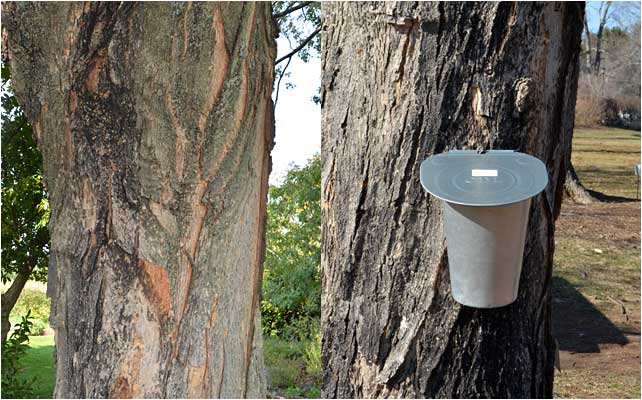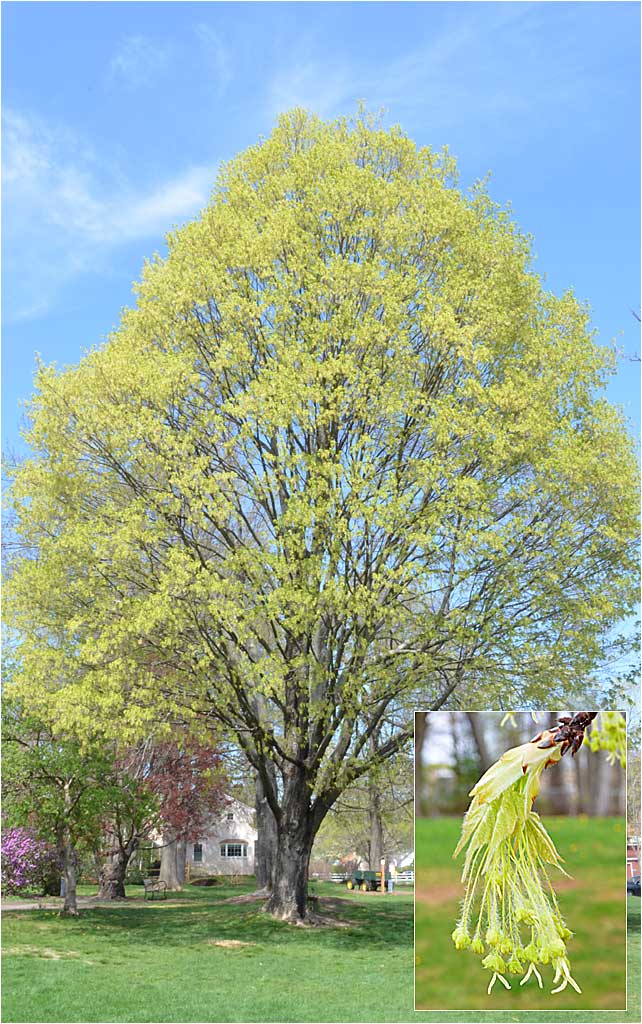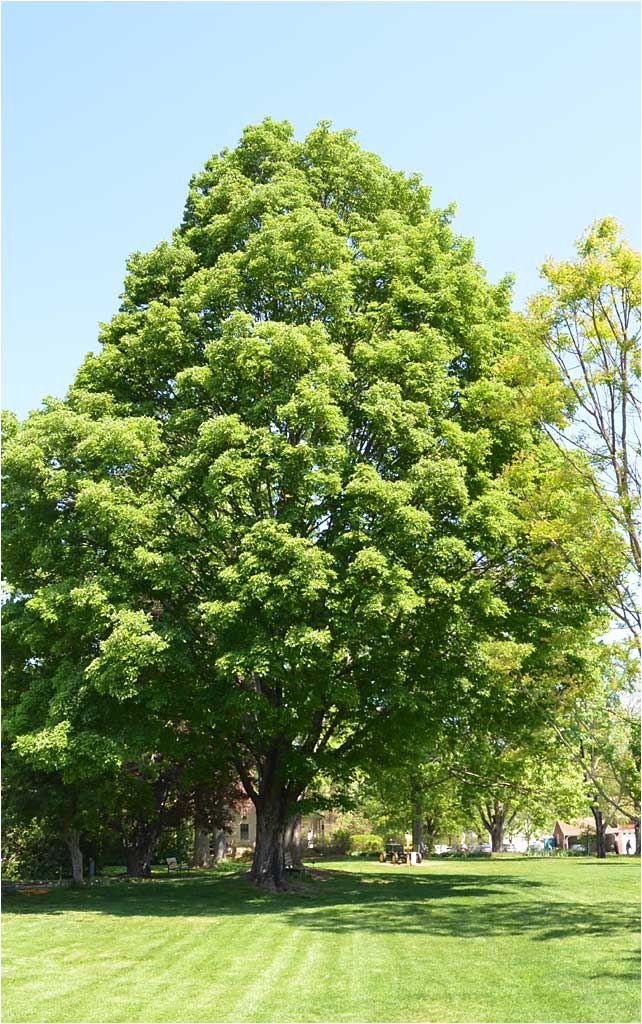19. SUGAR MAPLE, Acer saccharum

These scenes are still common in New England, but not so common in CT as they once were. This is late Winter, and the sap is running in Sugar Maples, one of our best native trees. Long-lived (to 250 years), productive, valuable to wildlife, and an important contributor to our environment.
WINTER, BARK & TAP

Like most Maple trees, the bark of Sugar Maple undergoes tremendous changes as it ages. This one is quite mature (Diameter-at-Breast-Height, DBH: 30.4 inches), easily a century old, or even a tiny bit more. Every year at Westmoor the tree is tapped (so is the Red Maple), tried, and made into maple syrup. Westmoor holds annual classes on the sugaring process, class info.
SPRING

Shortly after sugaring season is over, the park comes alive with the unusual colors of Spring. The Sugar Maple takes on this very light, yellow/green color. This is caused in part by emerging leaves, but the primary reason is its flower (above).
SPRING FLOWER

Sugar Maple trees are largely dioecious, altho they may have male and female flowers on the same tree. The female flowers present on long, hairy stalks (3 -4 inches) and their ability to sway in the wind exposes the stigma (pollen collector, above) to more pollen. Efficient! Amazing when seen close-up.
SUMMER

This Sugar Maple is one of the largest trees in the Arboretum, and each summer its canopy uses it leaf cover to transfer energy from the sun into food for the entire tree. The root structure of the tree may extend more than 2.5 times the area of the tree canopy (dripline) itself.
FALL

The Sugar Maple gradually turns this wonderful color from late September through October. "Peak" in 2022, shown here, was the last two weeks of October.
SAMARAS

The flying helicopters/whirlygigs of our childhoods are actually called "samaras". They develop in the Sugar Maple over the Summer and mature in early Fall. They will darken some more before "flying" off the tree. There are actually two seeds (one in each wing).